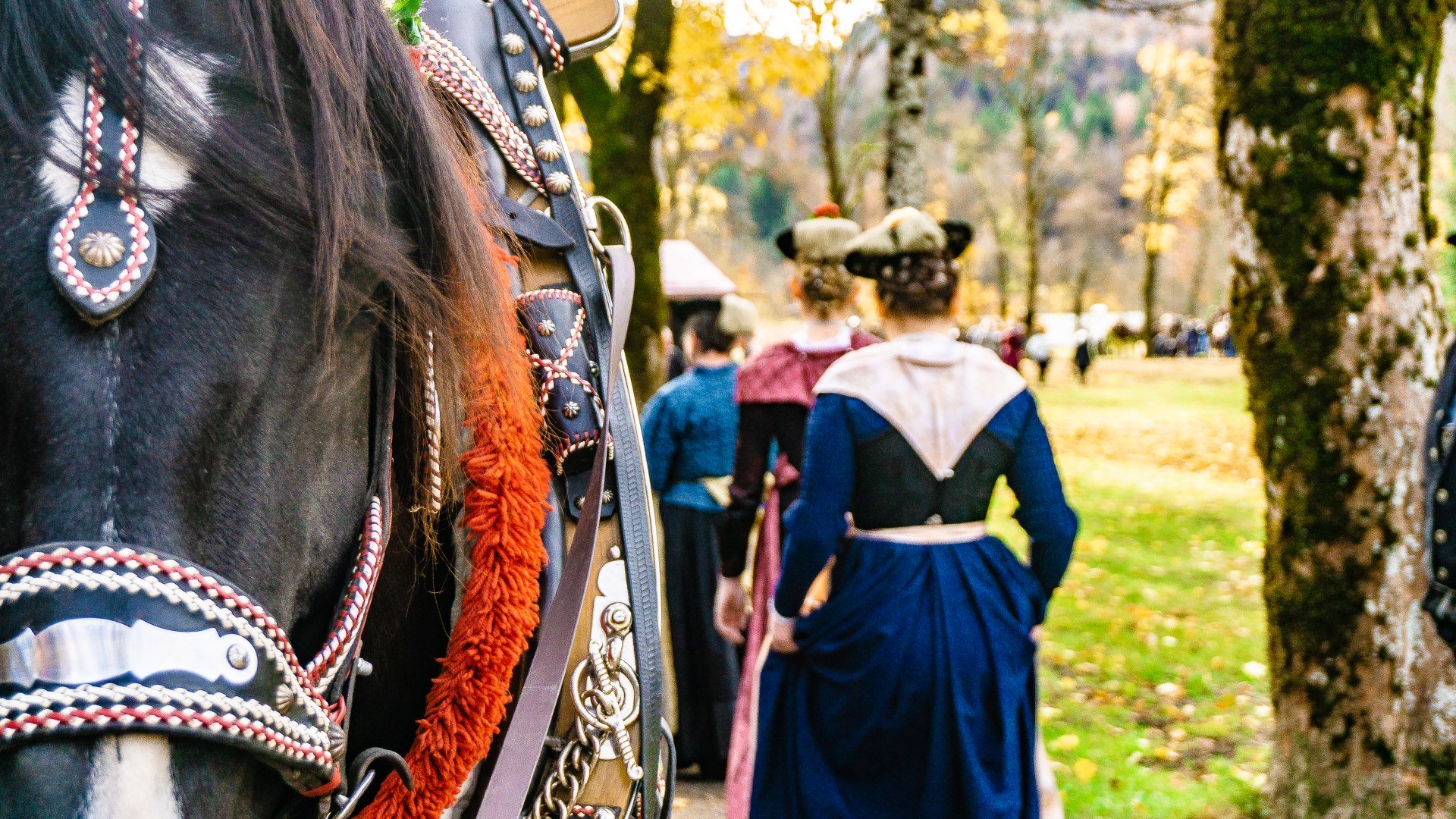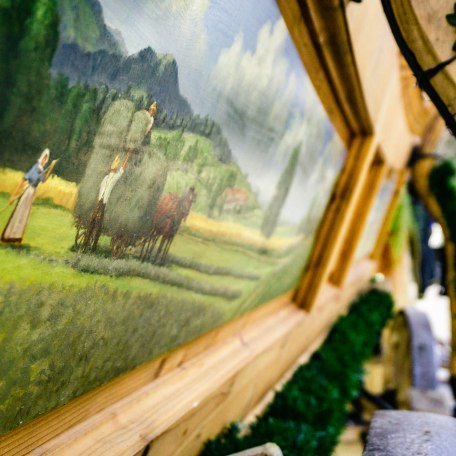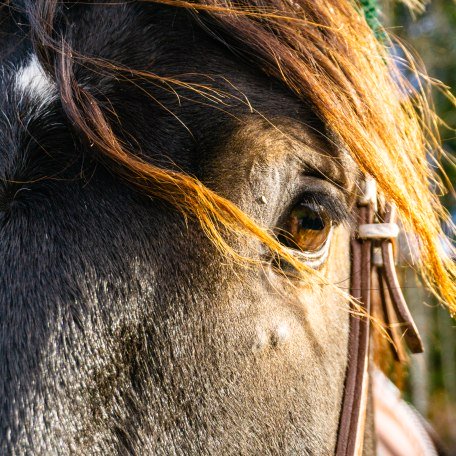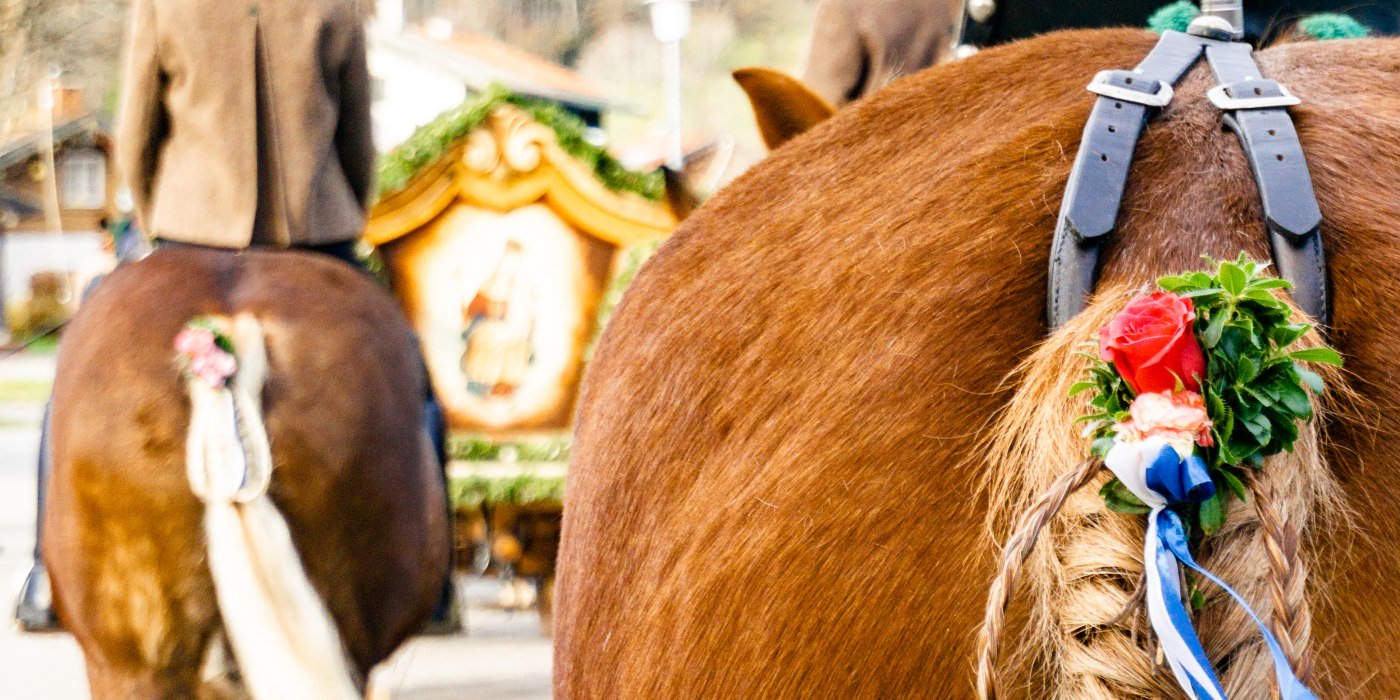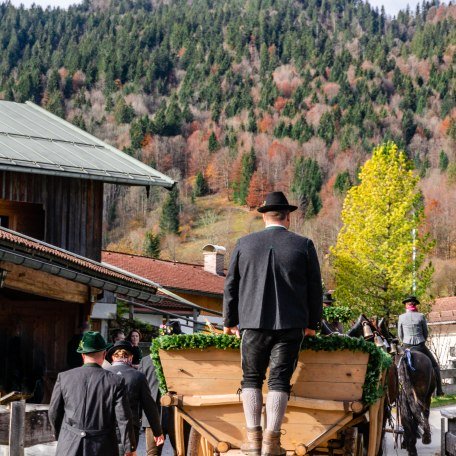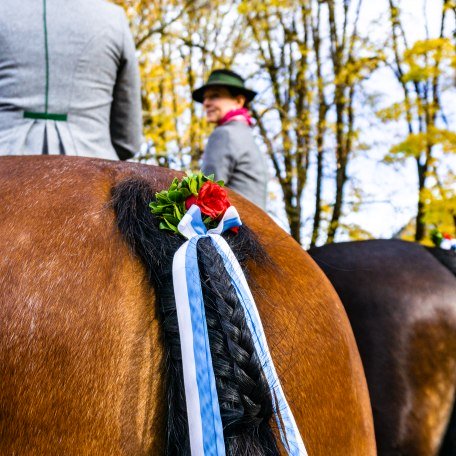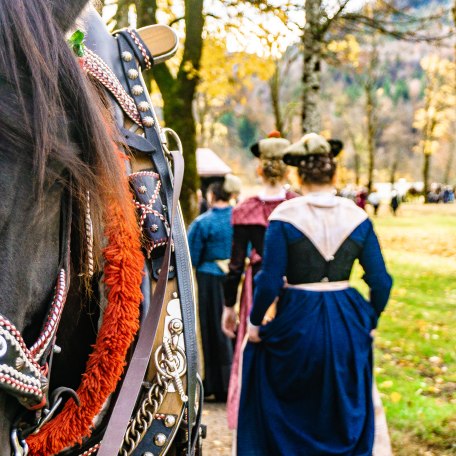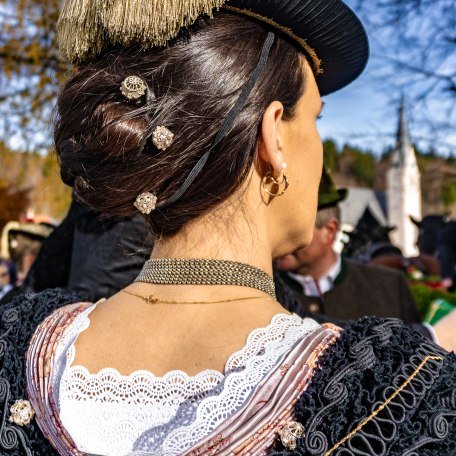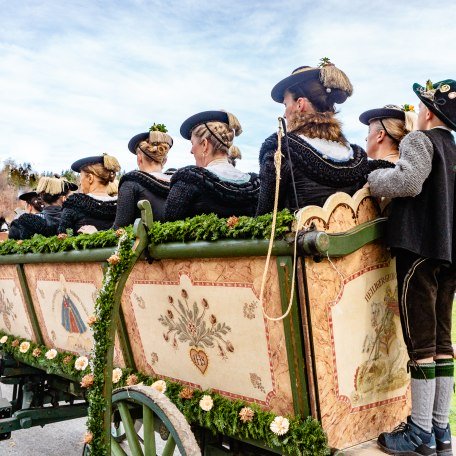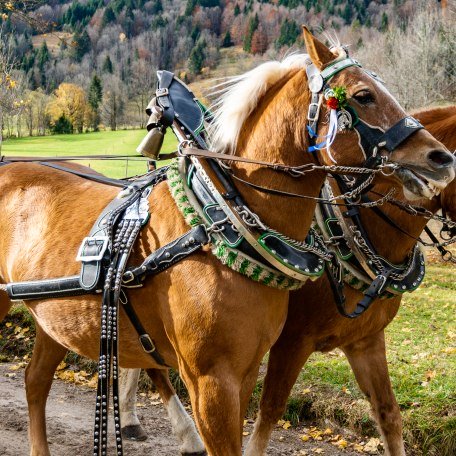Leonhardi Kreuth
The oldest Leonhardifahrt in Bavaria
In the community of Kreuth that remained original through the years, the Leonhardifahrt in honor of Saint Leonhard has been held on November 6th for over 500 years. After the service in the Leonhardi Church, splendidly decorated horse-drawn carts and decorated chest wagons move through the village three times for the blessing.
The numerous members of the traditional costume clubs, rifle companies and music bands solemnly commemorate the patron saint of horses. In the evening, many meet again to end the festival happily with music and dance.
THE STORY OF THE LEONHARDI RIDE
Saint Leonhard is considered the patron saint of horses. His festival is celebrated on November 6th. On this day, the oldest historically known Leonhardi ride was hold in the mountaineering village of Kreuth.
This dates to the year 1442 and is stated in the documentation "1400 Years of Christian Bavaria".
The next record points to the year 1469. A Benedictine from Tegernsee remarked in a treatise on popular belief: "It is a sin of superstition if you think that a ride is good for the horses."
Perhaps he remembered the legend of the female horse rider who is said to have circled the later Kreuther Kirchhügel three times. According to legend, in this way she asked for the blessing of the saint for her horses.
Pastor Joseph Obermayr provides the third evidence with his story "The parish of Gmund am Tegernsee and the Reiffenstuel". The story is dated to the year 1599. According to unknown sources, the Lederer Lamprecht Reiffenstuel reported Paulus Kohlhauf, "that he probably drove him over and over, riding home from Leonhard's Day in Kreuth."
However, there is no indication that a "Leonhardi ride" with a horse blessing took place before secularization.
From the "proclamation books" of the Kreuther parish church it emerges that a "cloister" from Egern arrived at Leonhardi and that ceremonial offices for the Wackersberg, Lenggries, Gaißacher, Kreuther and Wiesseer were held between 6 and 10 a.m. Abbots from Tegernsee were also happy to take part in these celebrations. The penultimate abbot, Benedikt Schwarz, was an annual guest at the patronage festival in Kreuth and was touched by blow that day too. He died there on November 6th, 1787.
Under the then elector and later King Max I Joseph, religious rides of any kind were banned in 1803. Only in the reign of his son (1833), King Ludwig I, was the ban lifted again.
It is not known when the Kreuther Leonhardi tour - now officially - was resumed.
A first clue is a wood engraving in the Sulzbacher calendar from 1864. In 1910 a new order was introduced. With the construction of the Villa Thielmann after 1900, a small street was created on the level from the parish church to Enterfels. For the first time the possibility of a driving procession was created.
Under the leadership of the Danzl farmer of Scharling, the first Kreuther Leonhardi trip was carried out in 1910, in which 18 cars took part.
With the beginning of the First World War, the reference in the “Seegeist” was: "Office with horse blessing". The Leonhardi trip was canceled and the only thing left was the one-time ride with the few horses that were not drafted for military service. Even after the war, the tour was continued until finally there was an upswing and in 1927 a real Leonhardi trip was carried out again. Up to 1931, 13 to 15 teams took part, some with "living" pictures on the wagons. To honor the fallen, former Leonhard drivers, one saw, for example, "a warrior's grave with a birch cross and a field-gray soldier standing in front of it" or "Children praying in front of St. Leonhard with church and Leonhardstein".
In 1932 the procession was canceled due to the election of the new Reichstag. Nevertheless, there were steadfast people who organized their tour after the high mass.
In 1933 the procession took place again with 15 cars (including one with a warrior's grave). In accordance with the political change, 3 SA men rode as pioneers. There were also SA men who kept "honor guards" on both sides between the portal and the church entrance.
Between 1934 and 1937 13 to 15 cars took part. The exception was in 1935: 8 out of 23 cars were with school children from the southern valley who probably had to take part. The "Praying Children" car was there several times, but the car with the "Warrior's Grave" was omitted, probably because of the new dark clouds in the political sky.
The procession was canceled in 1938 because of the foot and mouth disease. Despite the ban, riders came to the one-time ride. In 1939 the procession was canceled because the war had begun. 14 riders took part in the two rounds, which had been brought forward to Sunday, November 5th.
In the war years 1940 to 1944 there were no reports on the procession. On November 6th, 1944 there is an article in the "Seegeist": "... that some customs cannot be practiced at the moment but will not be completely forgotten."
In 1945 some riders showed up for a tour that was probably not approved by the victorious powers.
The first Leonhardifahrt took place again in 1946. The following is mentioned in the Leonhardstoana log book: The Americans kindly made the Lehmann (Post Office) hall available for the locals. Not to forget, there was even full beer and the same thing lifted the mood tremendously. It was hearty and too short and the good beer too little. The new newspaper "Der Hochlandbote" reported only briefly in 1947 about the Leonhardifahrt. Just one year later, the participation of 20 cars and riders was reported.
In 1949 the newspaper "Der Tegernseer" reported 17 cars. From March 1950 there is finally the Tegernseer Zeitung again with the "Seegeist". Since then there have been reports of between 16 and 32 cars taking part.
With the forerunners, the standard rider and the other riders, there are often up to 140 horses. Georg Hagn-Sternecker was the forerunner for many years before Toni Mehringer took over from him in 1970. Obtaining his own Leonhardi banner was Toni Mehringer's goal, which he achieved with the help of some donors.
The 85th founding party of the "Leonhardstoana" at the Kirchweih in 1993 was a special one: the banner was consecrated in the Kreuther parish church. It was proudly presented on the following Leonhardiffahrt. On this day, priests and believers from the founding shrine of St. Leonhard-de-Noblat from France were guests in Kreuth for the first time.
How does Kreuth celebrate his patronage today?
In the morning at 6 o'clock the Winkl is awakened by gunfire. The church procession with music starts at the Hotel Post at 9 a.m. All pilgrims take part. Then the service is celebrated at 9:30 a.m., in bad weather in the church, in good weather outdoors. Only after the Holy Mass everyone goes to their carriages, which have been set up in the meantime without disrupting the service. Then the three-time procession begins. The first blessing is given with holy water, the second with incense, and the third with the cross.
The forerunner begins the train with the Leonhard's banner, the first wagon is always the Kreuther schoolchildren, the last wagon the Leonhardstoana. In between the local council, Badler, Wallberger, Hirschbergler, Wiesseer, Gmunder, Schlierseer and wherever they come from. But they are all truly a magnificent sight.
